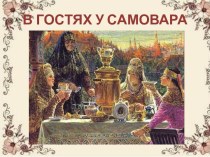- Главная
- Разное
- Бизнес и предпринимательство
- Образование
- Развлечения
- Государство
- Спорт
- Графика
- Культурология
- Еда и кулинария
- Лингвистика
- Религиоведение
- Черчение
- Физкультура
- ИЗО
- Психология
- Социология
- Английский язык
- Астрономия
- Алгебра
- Биология
- География
- Геометрия
- Детские презентации
- Информатика
- История
- Литература
- Маркетинг
- Математика
- Медицина
- Менеджмент
- Музыка
- МХК
- Немецкий язык
- ОБЖ
- Обществознание
- Окружающий мир
- Педагогика
- Русский язык
- Технология
- Физика
- Философия
- Химия
- Шаблоны, картинки для презентаций
- Экология
- Экономика
- Юриспруденция
Что такое findslide.org?
FindSlide.org - это сайт презентаций, докладов, шаблонов в формате PowerPoint.
Обратная связь
Email: Нажмите что бы посмотреть
Презентация на тему Oscar wilde
Содержание
- 2. Oscar Fingal O'Flahertie Wills Wilde (16 October
- 3. FamilyOscar Wilde was born at 21 Westland
- 4. Childhood
- 5. University educationTrinity College, DublinAt Trinity, Wilde established
- 6. Trinity College, Dublin
- 7. Magdalen College, OxfordWhile at Magdalen College, Wilde
- 8. Magdalen College, Oxford
- 9. 1880s - debut in societyAfter graduation from
- 10. London life and marriageIn London, he had
- 11. Prose writing: 1886–91He enjoyed reviewing and journalism;
- 12. Shorter fictionWilde published The Happy Prince and
- 13. The Picture of Dorian GrayThe first version
- 14. Theatrical career: 1892–95SaloméHe had continued his interest
- 15. DeathBy 25 November Wilde had developed cerebral
- 16. After deth
- 17. Скачать презентацию
- 18. Похожие презентации
Oscar Fingal O'Flahertie Wills Wilde (16 October 1854 – 30 November 1900) was an Irish playwright, novelist, essayist, and poet. After writing in different forms throughout the 1880s, he became one of London's most popular playwrights
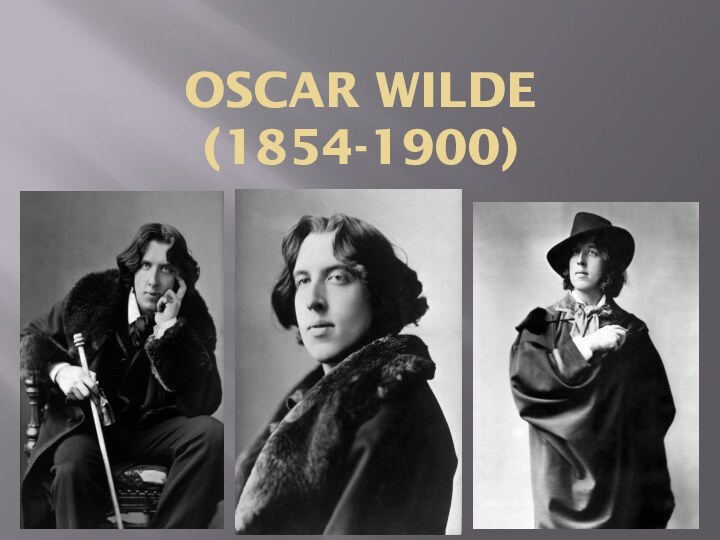
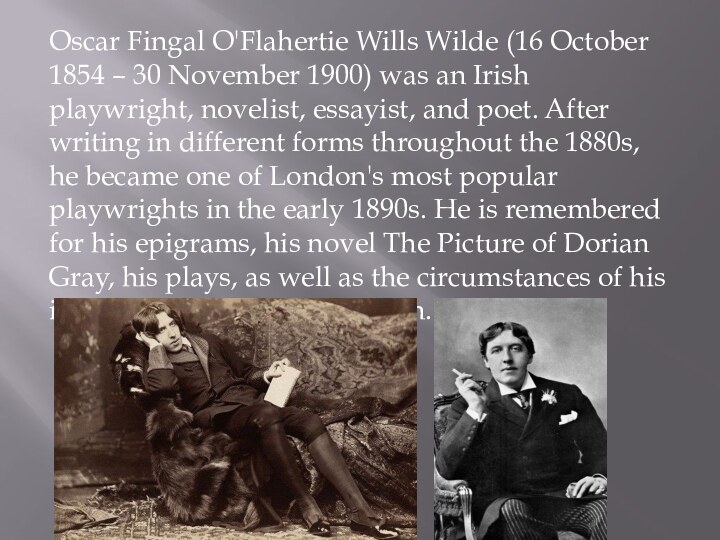
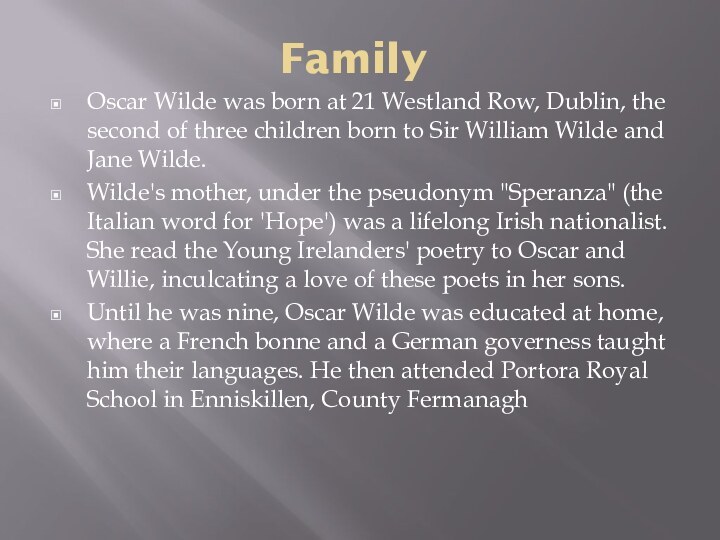
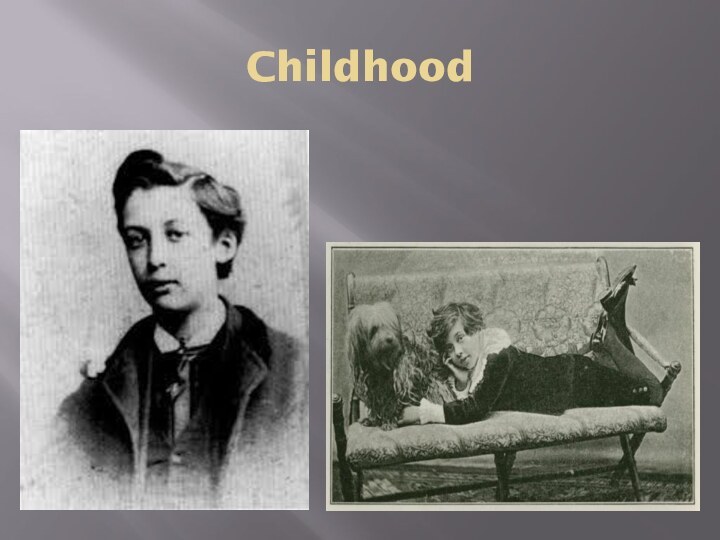
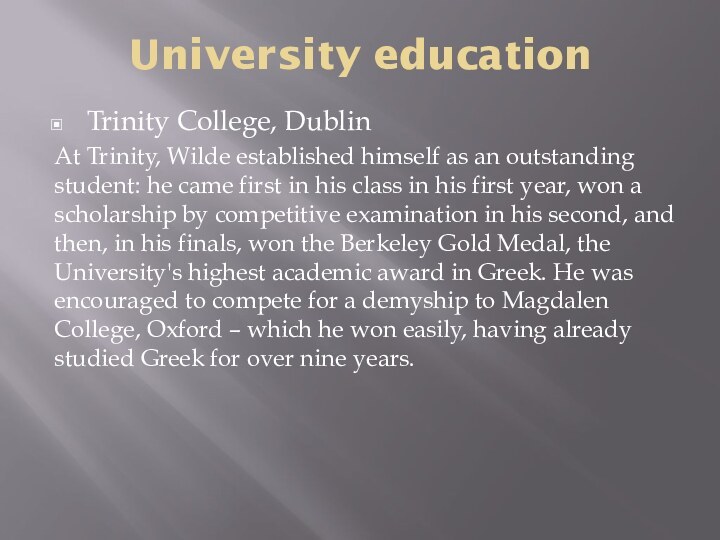
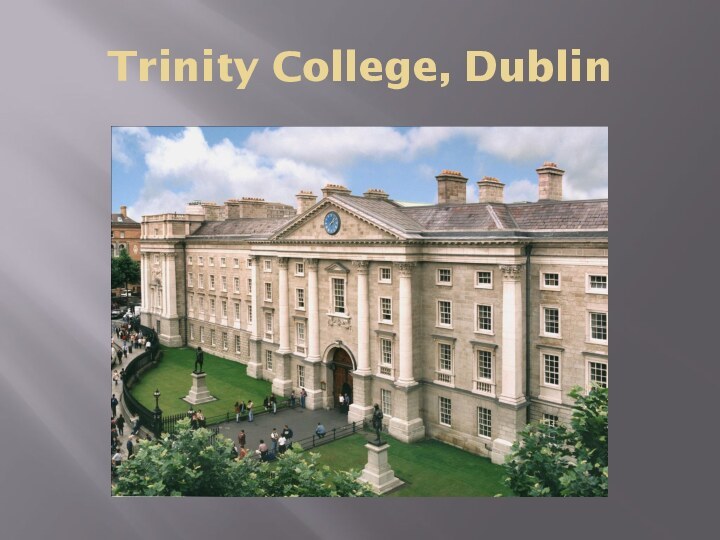
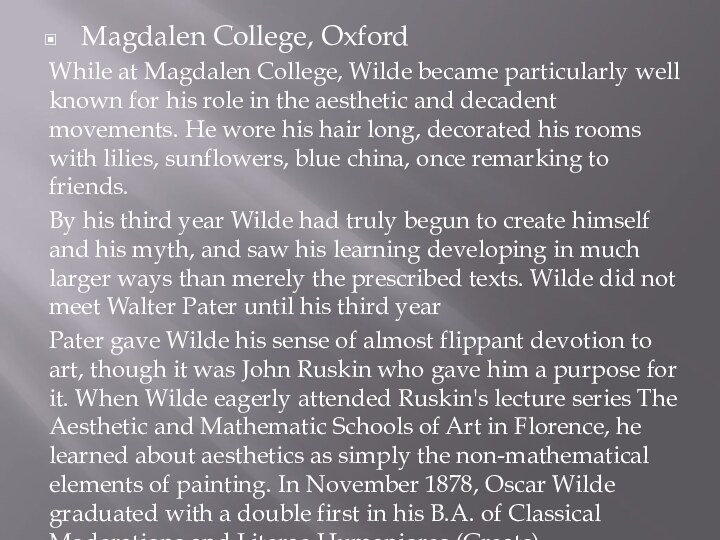
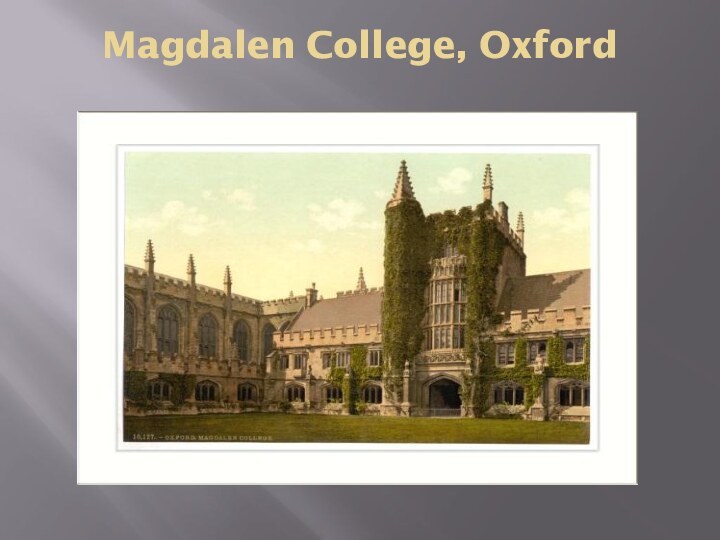
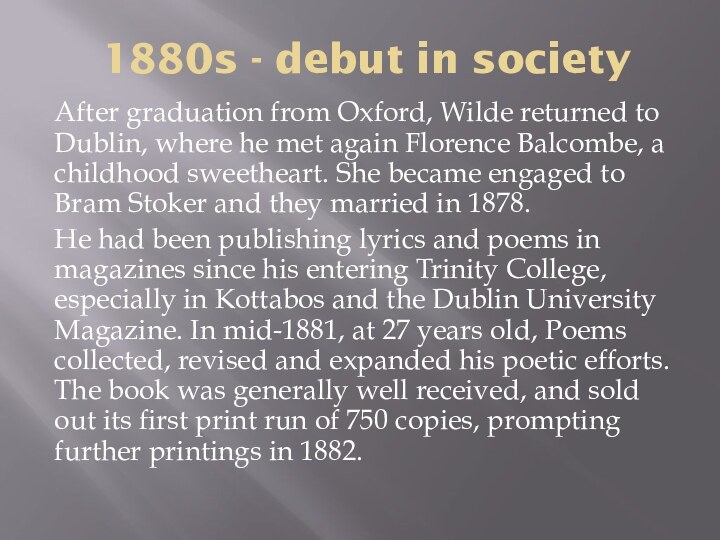
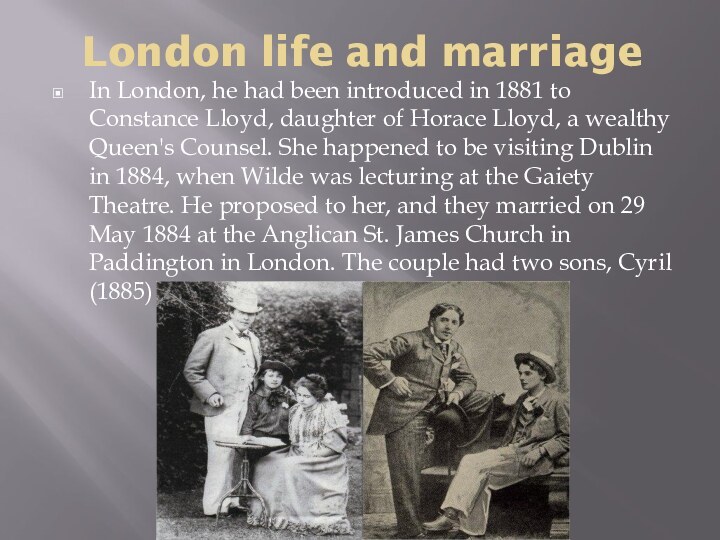
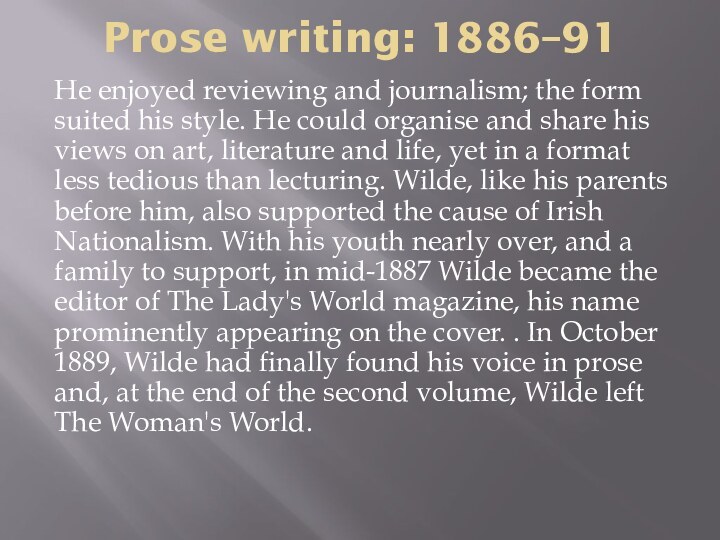
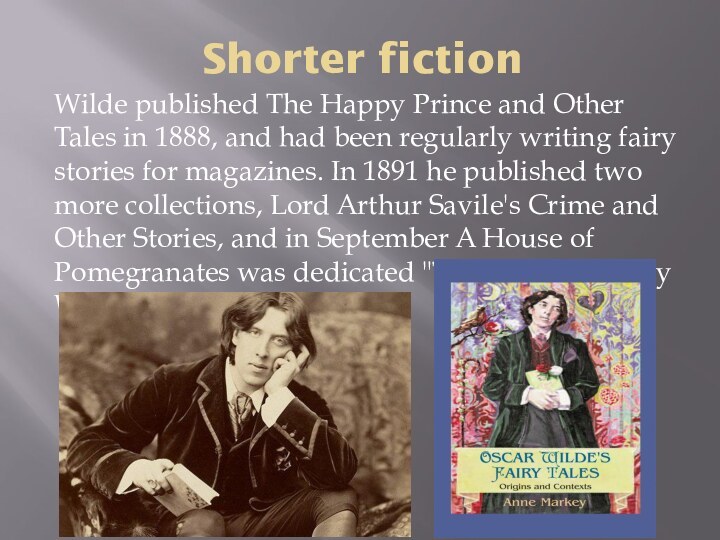
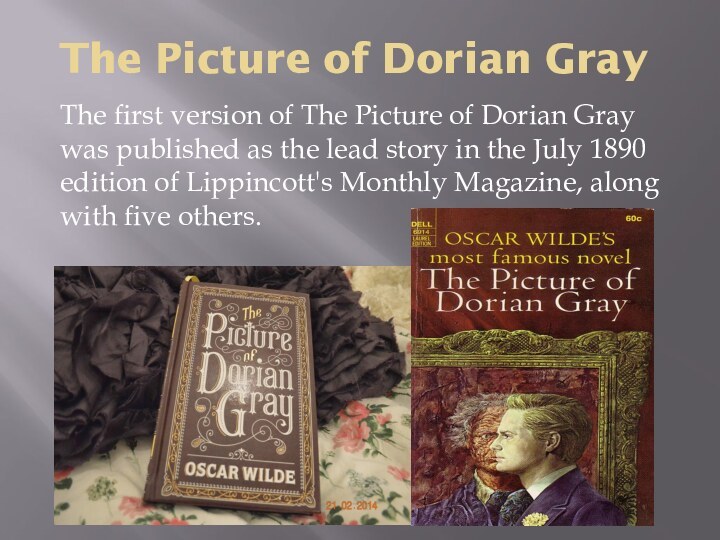
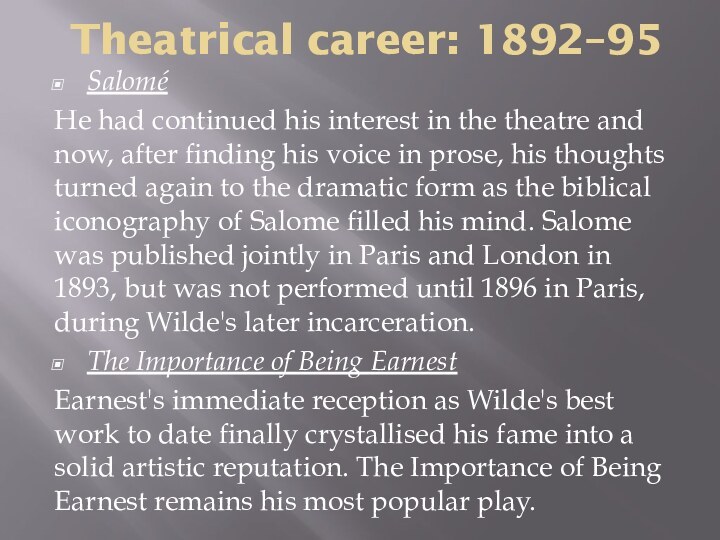
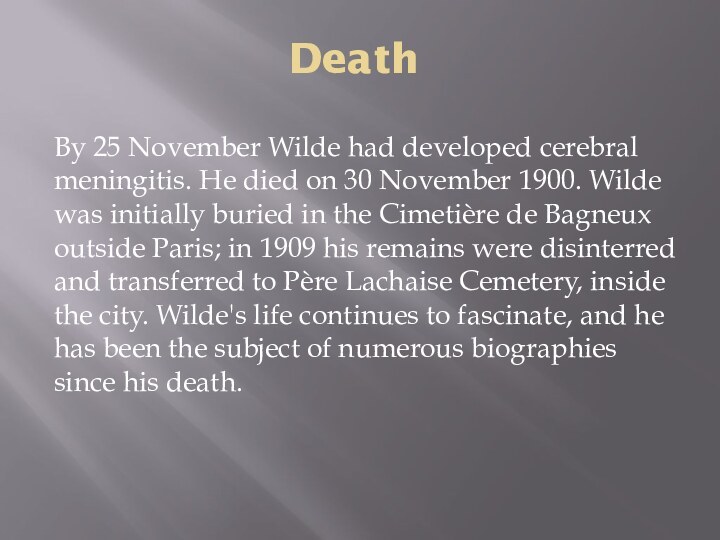
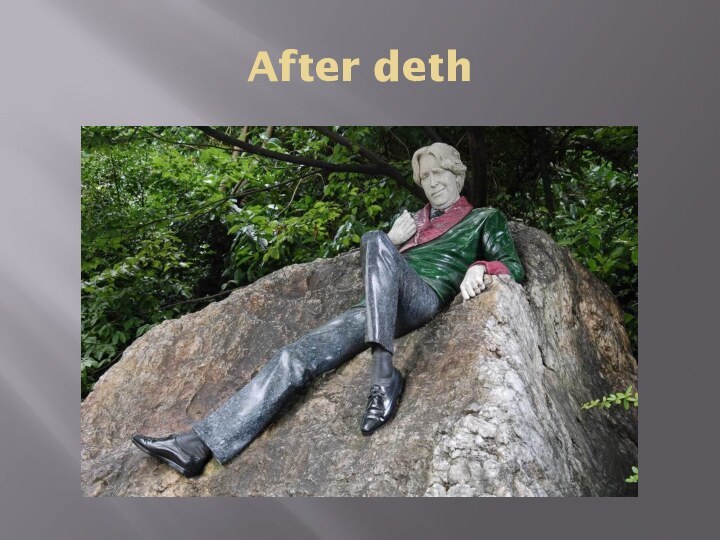

Слайд 3
Family
Oscar Wilde was born at 21 Westland Row,
Dublin, the second of three children born to Sir
William Wilde and Jane Wilde.Wilde's mother, under the pseudonym "Speranza" (the Italian word for 'Hope') was a lifelong Irish nationalist. She read the Young Irelanders' poetry to Oscar and Willie, inculcating a love of these poets in her sons.
Until he was nine, Oscar Wilde was educated at home, where a French bonne and a German governess taught him their languages. He then attended Portora Royal School in Enniskillen, County Fermanagh
Слайд 5
University education
Trinity College, Dublin
At Trinity, Wilde established himself
as an outstanding student: he came first in his
class in his first year, won a scholarship by competitive examination in his second, and then, in his finals, won the Berkeley Gold Medal, the University's highest academic award in Greek. He was encouraged to compete for a demyship to Magdalen College, Oxford – which he won easily, having already studied Greek for over nine years.
Слайд 7
Magdalen College, Oxford
While at Magdalen College, Wilde became
particularly well known for his role in the aesthetic
and decadent movements. He wore his hair long, decorated his rooms with lilies, sunflowers, blue china, once remarking to friends.By his third year Wilde had truly begun to create himself and his myth, and saw his learning developing in much larger ways than merely the prescribed texts. Wilde did not meet Walter Pater until his third year
Pater gave Wilde his sense of almost flippant devotion to art, though it was John Ruskin who gave him a purpose for it. When Wilde eagerly attended Ruskin's lecture series The Aesthetic and Mathematic Schools of Art in Florence, he learned about aesthetics as simply the non-mathematical elements of painting. In November 1878, Oscar Wilde graduated with a double first in his B.A. of Classical Moderations and Literae Humaniores (Greats)
Слайд 9
1880s - debut in society
After graduation from Oxford,
Wilde returned to Dublin, where he met again Florence
Balcombe, a childhood sweetheart. She became engaged to Bram Stoker and they married in 1878.He had been publishing lyrics and poems in magazines since his entering Trinity College, especially in Kottabos and the Dublin University Magazine. In mid-1881, at 27 years old, Poems collected, revised and expanded his poetic efforts. The book was generally well received, and sold out its first print run of 750 copies, prompting further printings in 1882.
Слайд 10
London life and marriage
In London, he had been
introduced in 1881 to Constance Lloyd, daughter of Horace
Lloyd, a wealthy Queen's Counsel. She happened to be visiting Dublin in 1884, when Wilde was lecturing at the Gaiety Theatre. He proposed to her, and they married on 29 May 1884 at the Anglican St. James Church in Paddington in London. The couple had two sons, Cyril (1885) and Vyvyan (1886).
Слайд 11
Prose writing: 1886–91
He enjoyed reviewing and journalism; the
form suited his style. He could organise and share
his views on art, literature and life, yet in a format less tedious than lecturing. Wilde, like his parents before him, also supported the cause of Irish Nationalism. With his youth nearly over, and a family to support, in mid-1887 Wilde became the editor of The Lady's World magazine, his name prominently appearing on the cover. . In October 1889, Wilde had finally found his voice in prose and, at the end of the second volume, Wilde left The Woman's World.
Слайд 12
Shorter fiction
Wilde published The Happy Prince and Other
Tales in 1888, and had been regularly writing fairy
stories for magazines. In 1891 he published two more collections, Lord Arthur Savile's Crime and Other Stories, and in September A House of Pomegranates was dedicated "To Constance Mary Wilde".
Слайд 13
The Picture of Dorian Gray
The first version of
The Picture of Dorian Gray was published as the
lead story in the July 1890 edition of Lippincott's Monthly Magazine, along with five others.
Слайд 14
Theatrical career: 1892–95
Salomé
He had continued his interest in
the theatre and now, after finding his voice in
prose, his thoughts turned again to the dramatic form as the biblical iconography of Salome filled his mind. Salome was published jointly in Paris and London in 1893, but was not performed until 1896 in Paris, during Wilde's later incarceration.The Importance of Being Earnest
Earnest's immediate reception as Wilde's best work to date finally crystallised his fame into a solid artistic reputation. The Importance of Being Earnest remains his most popular play.

